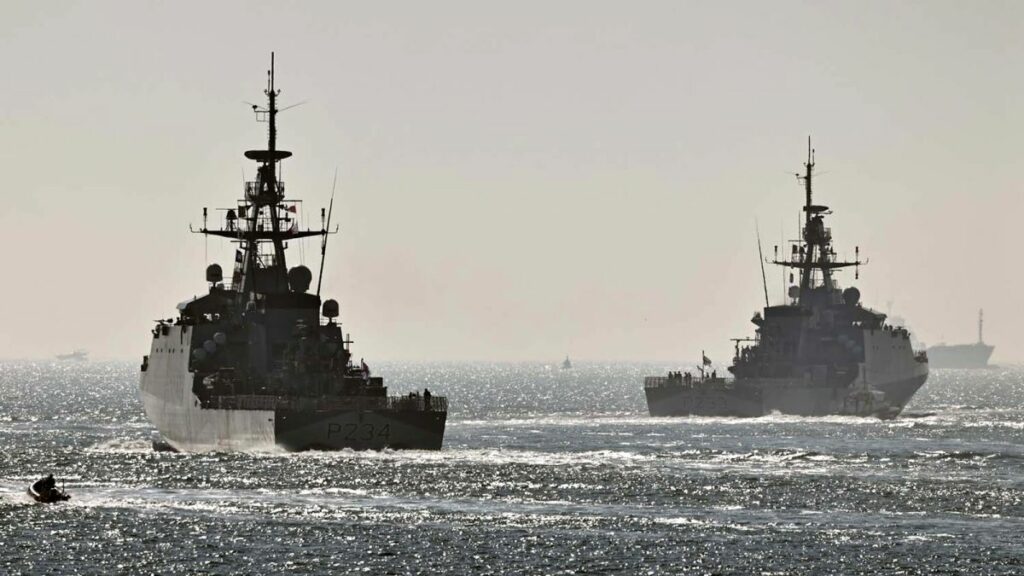Royal Navy warships leave for landmark Pacific deployment

“Two-thirds of the world is our playground,” said Lt. Cmdr. Ben Evans, commanding officer of HMS Spey, a 2,000-ton, 300-foot-long offshore patrol vessel that will team with HMS Tamar for a mission that is not expected to see them return to their Portsmouth home port until 2026.While patrolling the waters of the Pacific and Indian oceans, the warships will venture as far north as the Bering Sea and as far south as New Zealand and the Australian state of Tasmania.In the center of that region is China, with whom tensions have been heating up with Britain’s top ally, the United States.”They will act as the eyes and ears of the Navy — and nation — in the region, working alongside Britain’s allies, carrying out security patrols to deal with drug-running, smuggling, terrorism and other illegal activities, joining in exercises with other navies and armed forces, and flying the flag for Global Britain,” the Defense Ministry statement said.Global Britain is the country’s post-Brexit blueprint to exert British influence around the world in a number of areas, including in the case of the two warships, military security.Britain in March released a sweeping review of its military and foreign policy, in which it recognized a tilt toward the Indo-Pacific in the coming decade and warned of the challenges coming from China.HMS Spey and HMS Tamar each carry a crew of 46, members of which the Royal Navy says will be swapped out as frequently as every few weeks as the service tries to get regional experience to its crews, while not burning them out on the far-flung mission. That will also allow the ships to spend up to nine months at a time at sea, the navy said.’2,000-ton Swiss Army knives’The ships will not have a permanent base in the Pacific. Instead, they’ll call in bases and ports of allies and partners as best suits their mission, the navy said.Along with their normal crews, the ships will host up to 52 Royal Marines or other troops, who can help with specific missions, “a versatility which makes the vessels ‘2,000-ton Swiss Army knives,'” according to the navy statement.The ships headed west into the Atlantic from Portsmouth to begin their deployment Tuesday. They will go through the Panama Canal to make their way to their new Pacific patrol area.Writing in Chinese state media when the Queen Elizabeth transited the South China Sea in late July, Wu Shicun, president of China’s National Institute for South China Sea Studies, described the UK carrier deployment as an attempt to “relive the glory days of the British Empire.””The South China Sea was a symbol of Britain’s glorious colonial past, through which the old-time empire that prided itself on its worldwide colonies shipped back the fortune and treasures it plundered in Asia,” Wu wrote.On Wednesday, Hu Xijin, editor of the state-run tabloid the Global Times, brushed off the significance of the pride of the UK fleet in Pacific waters.”The British aircraft carrier’s visit to Japan was regarded by Chinese netizens as a hug of two hired thugs of the US. In the eyes of Chinese netizens, Queen Elizabeth aircraft carrier is useless as a dredger,” Hu said on Twitter.



